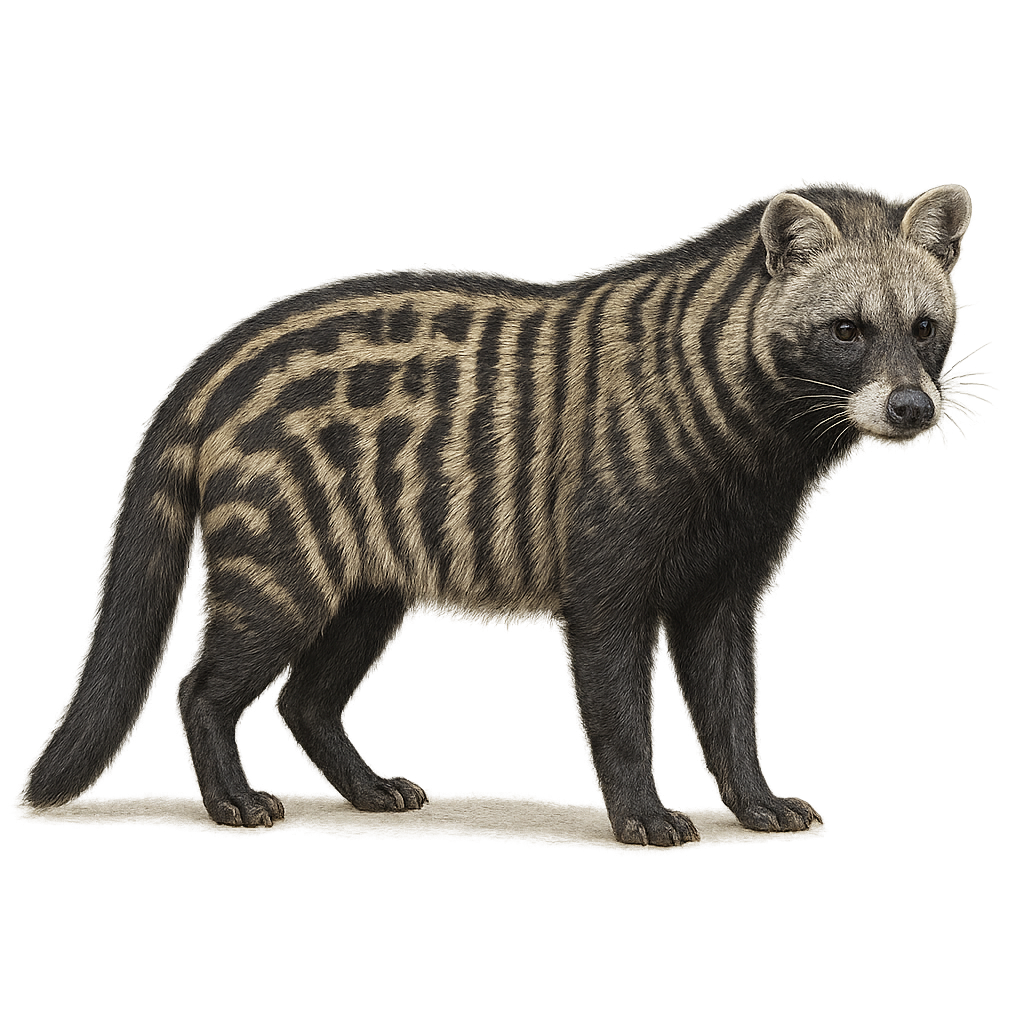Your wildlife photography guide.
Explore the african civet in detail, study its behavior, prepare your shots.
Where to observe and photograph the african civet in the wild
Learn where and when to spot the african civet in the wild, how to identify the species based on distinctive features, and what natural environments it inhabits. The WildlifePhotographer app offers tailored photography tips that reflect the african civet’s behavior, helping you capture better wildlife images. Explore the full species profile for key information including description, habitat, active periods, and approach techniques.
African Civet
Scientific name: Civettictis civetta

IUCN Status: Least Concern
Family: VIVERRIDAE
Group: Mammals
Sensitivity to human approach: Suspicious
Minimum approach distance: 10 m
Rut period: February to March
Gestation: 60-72 jours
Births: April to May
Habitat:
savannas, forests, woodlands
Activity period :
Mainly active at night, generally discreet during the day.
Identification and description:
The African civet, Civettictis civetta, is a medium-sized carnivorous mammal known for its spotted coat and distinctive black band across its eyes. Native to sub-Saharan Africa, it primarily inhabits savannas, forests, and woodlands. It is mainly nocturnal, feeding on a variety of foods, including fruits, insects, and small animals. The African civet is also known for producing a musky secretion used in the perfume industry. Although generally solitary, it can sometimes be seen in small groups. Its adaptability to various habitats and diverse diet make it a resilient species, though habitat loss and hunting can pose threats.
Recommended lens:
400 mm – adjust based on distance, desired framing (portrait or habitat), and approach conditions.
Photography tips:
To photograph the African civet, prioritize night outings, as this animal is mainly active at night. Use a 400mm lens or longer to capture detailed images from a distance without disturbing the animal. A tripod can be helpful to stabilize your camera in low-light conditions. Be patient and discreet, as the civet is suspicious and may hide if it feels threatened. Try to capture moments when it is feeding or exploring its environment for more dynamic shots.
The WildlifePhotographer App is coming soon!
Be the first to explore the best nature spots, track rutting seasons, log your observations, and observe more wildlife.
Already 1 439 wildlife lovers subscribed worldwide

